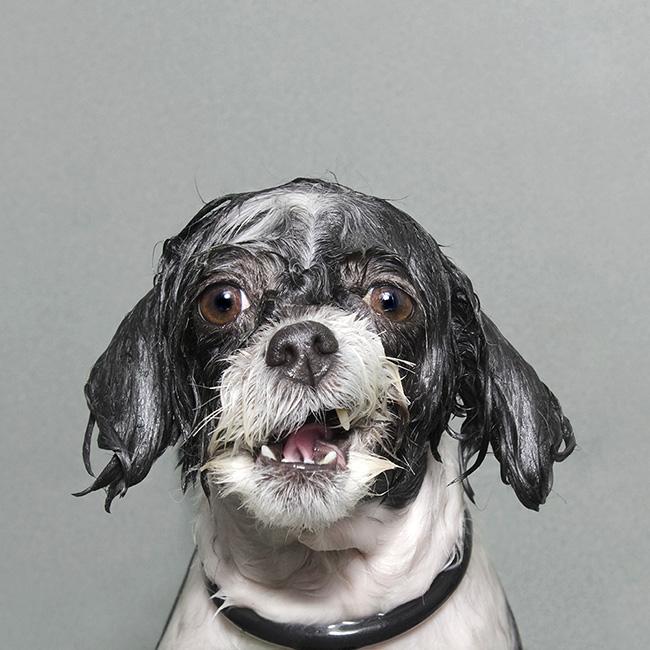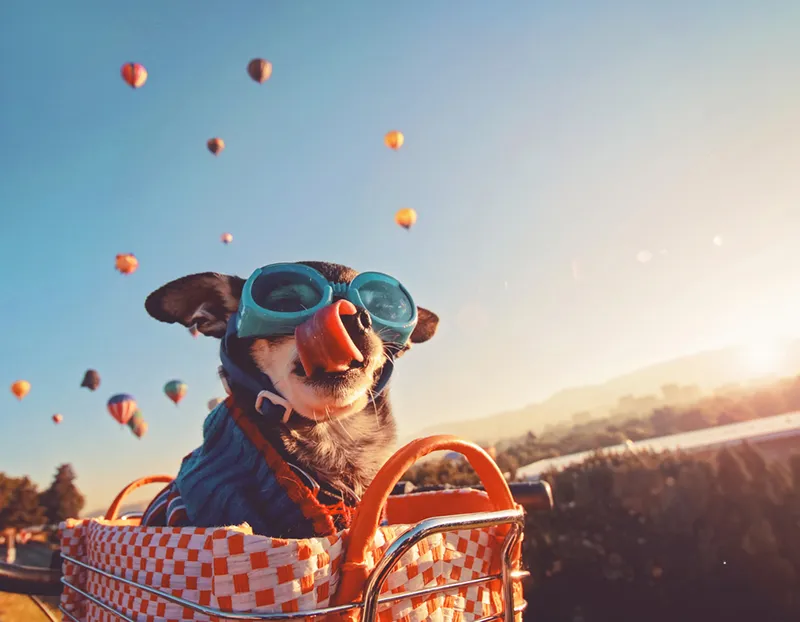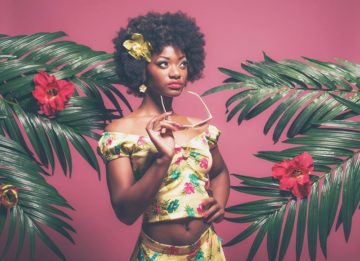Man’s Best Friend in the Spotlight: Interview with Sophie Gamand
Pitbulls and flowers – an interesting combination that rattles the silly stereotypes. Looking at Sophie Gamand’s work, you can’t help but smile. A man’s best friend is the star of all the photographs; they’re cute fresh out of a bath and simply adorable as they are, patiently posing for the perfect shot.
It’s a pleasure to introduce the artist behind these candid and artistic photographs. Sophie Gamand has put a new spin on photographing dogs, and here’s a little bit about her work for a great cause:
Tell us a little bit about yourself and your journey with pet photography.
I started photographing shelter dogs in 2010, upon moving to New York from Europe and discovering the huge number of dogs who are abandoned every year. Slowly, it became my full-time job. I photograph shelter dogs for free, and manage to make a living selling prints, merchandise and working with companies that share my passion to help homeless dogs, in part thanks to my successful Instagram account, where I share all the stories of my models.
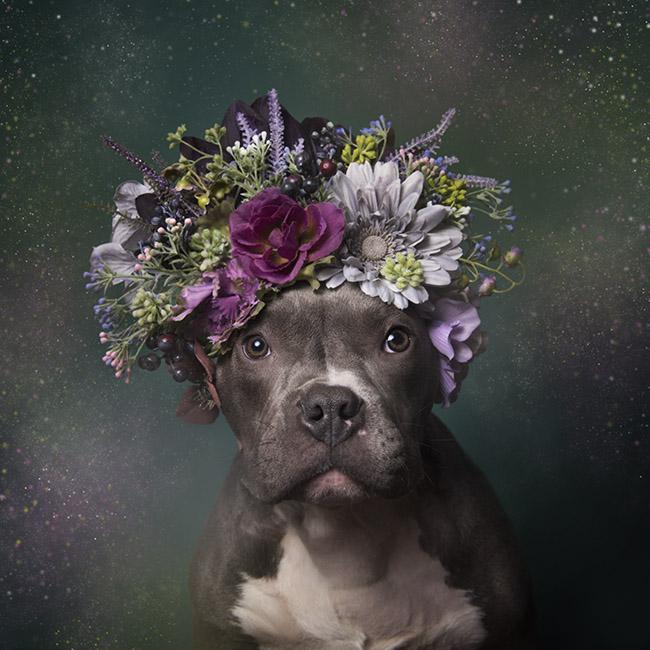
You’ve made pet photography an art form. How would you define your approach to pet photography?
I actually don’t consider myself as a pet photographer at all. I guess I would see myself as an artist/advocate who uses photography as one of her mediums. Maybe that’s why my work is different. Through dogs, it’s humans I try to better understand. Working with shelter dogs is very inspiring, and challenging. I see these broken, abused, throwaway dogs as my muses, and work with them for almost all my projects – even when I am shooting for Free People, Vogue, or Samsung.
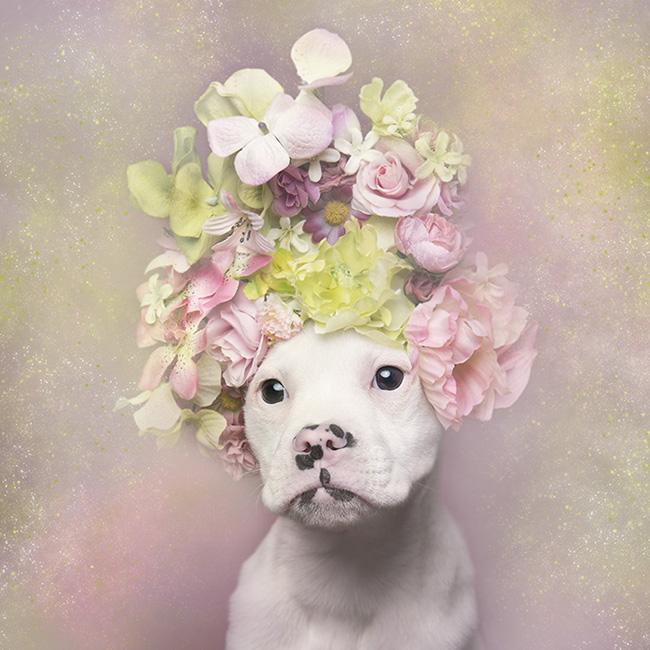
Working with dogs is such a difficult task, they certainly don’t listen to direction like humans do. What are your photoshoot sessions like?
Actually, I think dogs are better listeners! It doesn’t take much to make dogs understand what you expect of them. They are highly sensitive, intelligent creatures with an eagerness to please. They love taking direction. I don’t have to use many words, which I find easier than working with humans. With humans, the language always comes in the way (English is not my first language).

How do you find your dog ‘models’?
I travel to shelters around the country, with my studio, and set up in their facility.
What’s your favourite part about being a photographer?
Photography is a fast, easy way to tell a story. I like how immediate this medium is.
Do you practice other art forms?
Lately, I am going back to other mediums like painting, collage, sculpture, installation. I am designing a big exhibit around my Flower Power series, and I hope to add other mediums. I feel like photography is not enough anymore. But once you get successful with something, it’s hard to take a chance on anything else. It feels like starting all over again.
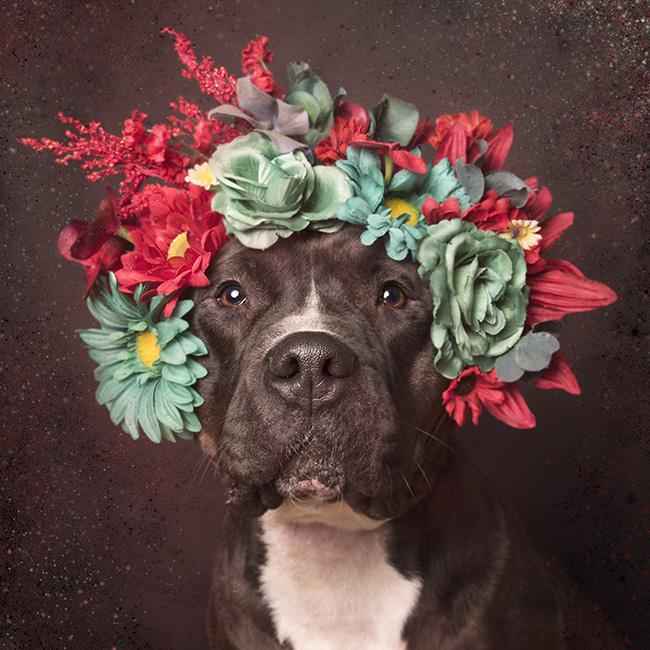
What’s the best piece of advice you can give to those looking to elevate the art of pet photography?
Not just pet photography, anything! You have to constantly strive to become better. If something inspires you, take it and turn it around and make it a million times stronger. Create work that cannot be ignored.
Could you elaborate a little on the idea of your series of pitbull photographs with flowers?
Flower Power is a series of pit bulls from shelters wearing flower crowns. I travel around the country to capture these portraits and tell the stories of these dogs, some of whom have been waiting in shelters for 5 years or more… The idea was to break the negative image these dogs have – which leads to the euthanasia of hundreds of thousands of healthy, adoptable dogs every year. The pit bull issue is a very controversial, complicated one. These images are a way to reverse our perception so that we can be more open to actually seeing these dogs for what they are: dogs. Just dogs. Not monsters. Soulful, touching creatures who are suffering immense abuse because we are afraid of them. People have been scared of pit bulls for so long now, it’s pushed these dogs into dark corners of society, allowing for terrible abuse to occur, in the general indifference. This series is a reminder that all life is precious and should be treated as such. The portraits also get a lot of these dogs into homes, which is a nice plus! I have been working on it for 3 years now (nearly 400 portraits), and it’s been an incredible journey.

You’ve achieved quite a lot with your project ‘Wet Dog’, to what do you attribute the success of this project?
I have actually achieved much more with Flower Power! But Wet Dog is the project that jumpstarted my career. I was invisible before that series. I shot that series in one day. I remember thinking it had potential, but I wasn’t sure what audience would be interested in wet dogs. Then I sent the series to a couple of art/photo blogs, and everything snowballed. The series went viral big time, I received awards (Including a Sony World Photography Award, Portraiture). It opened the door for Flower Power, which I shot a few months later. I also got a book deal. Finally, my work was seen and I started making a living with it. Wet Dog changed my life. I think people connected to the humanity of these portraits, which were also hilarious. I always wanted to photograph dogs as if they were human. I wanted to change the way we photograph them, revolutionize that part of photography – dog portraiture – that is often seen as subpar. It seemed as if dogs, as a photography subject, hadn’t been explored nearly as deeply as they could have been.
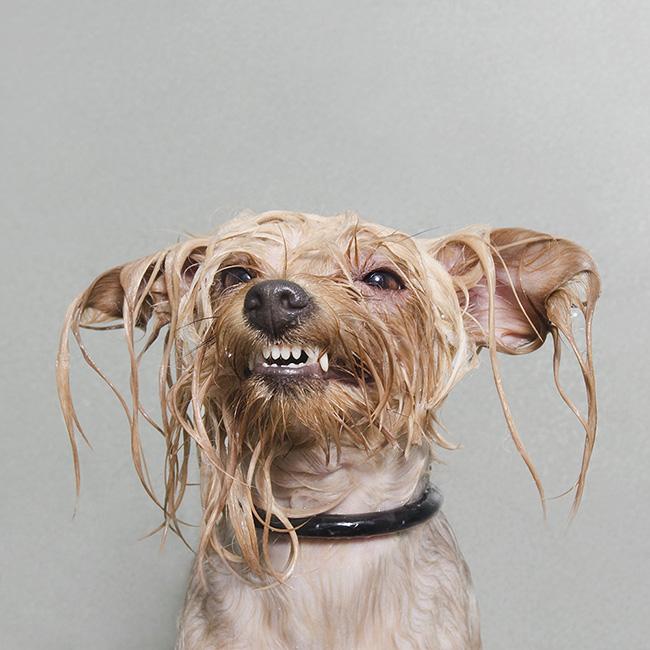
Do you have any pets? Do you perhaps have a favourite breed of dogs that you make the subject of your photoshoots?
Shelter dogs of course! I adopted a little mutt from Puerto Rico recently. I have very little interest in breeds. I don’t really care, because the personality, the eyes, the soul of these little munchkins is what matters. Who cares the size, coat or pedigree. I am all shelter dogs, all the way. Even for my commercial shoots, I always prioritize models from shelters who are waiting for adoption. I want to show the world that these dogs are worth millions, and they can do it all.
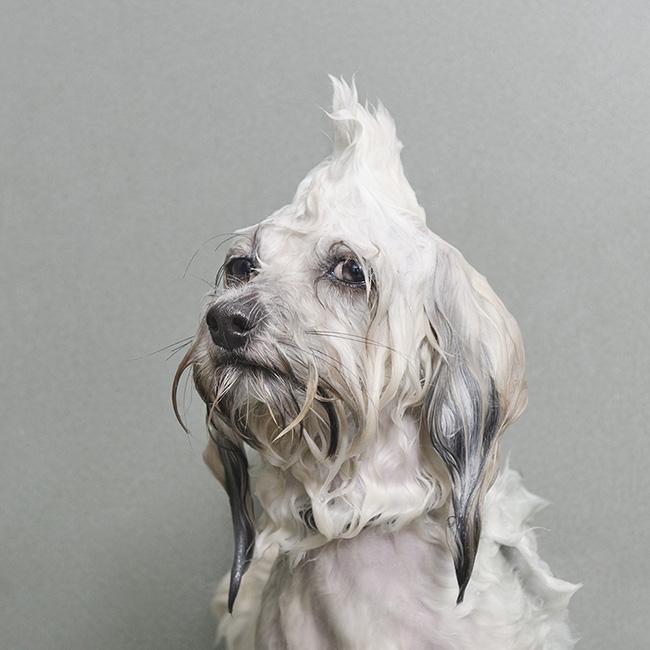
Could you tell us about your plans for the future. Are there new projects in the making?
I am working on a big exhibit around Flower Power. Pit bulls are banned in some cities / counties and it makes the work of shelters extremely difficult, leading to the euthanasia of perfectly healthy, adoptable dogs. With the success of Flower Power, I have been given a voice, which I now intend to use to renew the political dialog around these dogs. I am also working on the Flower Power book. And a bunch of other projects! There is so much to be explored and uncovered, when it comes to dogs and the animal welfare system.
